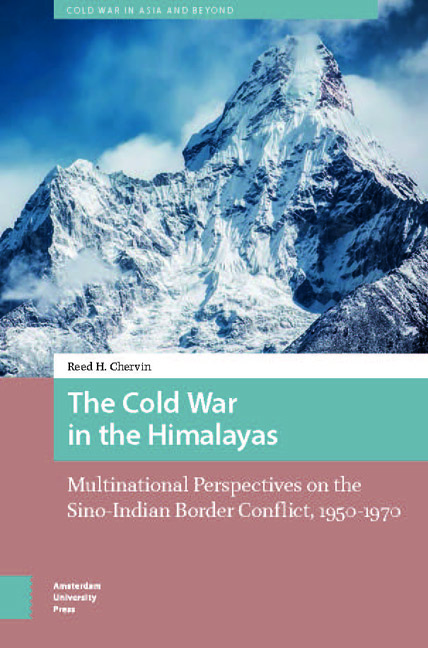 The Cold War in the Himalayas
The Cold War in the Himalayas Abstract
The introduction sets the stage for my book by connecting clashes at the Sino- Indian border in 2017, 2020, and 2021 with tension that occurred during the 1950s and 1960s. It describes how this book differs from existing literature on the subject, the background of the border issue, the relevance of the Cold War as well as historical competition and cooperation between India and China.
Keywords: Sino-Indian, border, Cold War, introduction
In 2020 and 2021, Indian and Chinese troops fought in areas along their disputed border, including the Galwan Valley and Pangong Lake. In 2017, China and India had a dust-up over a frontier area called Doklam (Donglang). These confrontations were far from isolated incidents. Rather, they comprised part of a series of border disputes between India and China dating back to the 1950s.
This work explores the evolution of the Sino-Indian border conflict— broadly defined—from 1950 to 1970.1 These dates are chosen for several reasons. The year 1950 was a watershed moment in Sino-Indian relations due to the Chinese invasion of Tibet. Furthermore, beginning with this year allows us to evaluate each nation during its infancy (the Republic of India and the People's Republic of China were founded in 1947 and 1949, respectively). The book ends in 1970 since the international scene changed in 1971 with the onset of the Indo-Pakistani War and ping-pong diplomacy. These dates also mark roughly ten years before and after the Sino-Indian Border War. Using ten years before and after as markers makes sense so that we can understand what events contributed to the conflict as well as what the medium-term ramifications of it were.
I specifically examine how conflict at the frontier destabilized spheres of influence and caused the countries involved to reassess their allies and rivals. This contest was a revival of the nineteenth-century Great Game, garnering the interest of political entities both inside and outside the border region. A range of actors viewed the border conflict as an opportunity to pursue their foreign policy goals, which comprised trade, security, and prestige.
To save this book to your Kindle, first ensure [email protected] is added to your Approved Personal Document E-mail List under your Personal Document Settings on the Manage Your Content and Devices page of your Amazon account. Then enter the ‘name’ part of your Kindle email address below. Find out more about saving to your Kindle.
Note you can select to save to either the @free.kindle.com or @kindle.com variations. ‘@free.kindle.com’ emails are free but can only be saved to your device when it is connected to wi-fi. ‘@kindle.com’ emails can be delivered even when you are not connected to wi-fi, but note that service fees apply.
Find out more about the Kindle Personal Document Service.
To save content items to your account, please confirm that you agree to abide by our usage policies. If this is the first time you use this feature, you will be asked to authorise Cambridge Core to connect with your account. Find out more about saving content to Dropbox.
To save content items to your account, please confirm that you agree to abide by our usage policies. If this is the first time you use this feature, you will be asked to authorise Cambridge Core to connect with your account. Find out more about saving content to Google Drive.